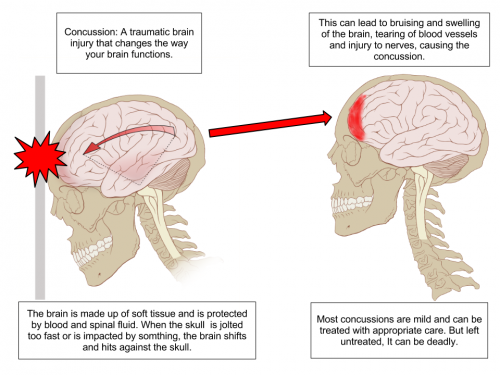Headers could soon to be doomed in soccer, or least that is what a class-action lawsuit is aiming to do.
The lawsuit filed by soccer parents and players against six national and international soccer organizations, among them are U.S. Youth Soccer and FIFA, accusing the organizations of being negligent in treating head injuries.
Officials with Arizona Youth Soccer Association refused to comment on the idea of limiting headers in the sport after repeatedly being contacted.
The suit filed in U.S. District Court, Northern District of California seeks to change rules that would limit headers for youth under 17 and the substitution protocols, two soccer practices that if changed can impact soccer dramatically.
The lawsuit implies that soccer organizations have been negligent in treating head injuries although there hasn’t been any medical research that links headers and concussions to each other. According to the U.S. Consumer Product Safety Commission statistics, 12.6 percent of head injuries in soccer are head to ball.
Girl’s soccer is only second to football for sports-related concussions, with 50 percent chance of a concussion.
“Currently there hasn’t been any research that shows heading causes concussions,” said Stephen Paul, medical sports doctor and sports medicine coordinator at Campus Health at the University of Arizona. “If the technique of heading the ball is done correctly then there hasn’t been any evidence to show that hitting the ball with the head produces concussions.”
If the heading is done correctly, the ball’s impact with the head is not usually forceful enough to cause a concussion. A player who has generated the proper strength muscles can hit the ball with the crown of their head where the hairline is. In this matter the ball is not hitting the player as much as the player is directing the force, Paul said.
“I don’t agree with the tenants of the law[suit] due to no medical evidence but in theory I think the law brings a great awareness to the issue of concussions,” Paul said. “There is no need to have a 10-year-old heading the ball across the field, but certainly when you get older a discussion should take place.”
Youth who get injured from heading the ball is usually due to their necks not being too strong, Paul added. Based on youth strength, they rarely have enough force to kick a ball fast enough that would generate the necessary speed to result in a concussion, he added.
“I think the lawsuit on itself is not the answer, but I think it brings a discussion of importance,” Paul said.
A question that researchers are still trying to answer is why some people do not end up with long-term consequences while other players have significant consequences from concussions, said Gregory Ayotte, director of consumer services at the Brain Injury Association of America.
Although concussions are severe in soccer, a player is more likely to get a concussion when accidentally knocking their head against other players. Some players can get a concussion during a game and make the mistake of not telling anyone and proceed to play, that’s when long-term injuries can result, said Bryce Nalepa, athlete-training coordinator at the Banner Concussion Center.
“Whenever you have kids rushing back into playing who are not fully cleared from their concussions that’s when you get the long-term problems,” Nalepa said.
A direct contact with the ball doesn’t usually result in a concussion if the contact was done properly but if the ball hits someone’s head and their neck isn’t strong enough, their head gets forced back as a result of contact with the ball, which can result in a greater risk than heading the ball, Nalepa said.
“I think coaches, players and parents are more aware of concussions now but we still have a long way to go in terms of educating people on what concussions are, how to recognize them and what are the steps to take in terms of a safe recovery,” Nalepa said.
A lot of high schools don’t always have athlete trainers who work directly with the teams, which has been the main concern at the high school level teams, Nalepa added.
David Potocki got a concussion from soccer at the age of 16 and then again at the age of 18 when playing for a club soccer team.
“I went to head the ball and so did the goalkeeper and he ended up punching the back of my head,” said Potocki assistant coach for a college Division II soccer team in Utah.
When Potocki got his first concussion he immediately felt dizziness, nausea and headache. It was severe enough that Potocki was pulled out of the game. A couple of years later, Potocki got a second concussion in soccer when he hit the back of another player. Although he felt some side effects at the moment he continued playing in the game.
“I’m very stubborn and I don’t believe in coming out of the game,” Potocki said. “At the age of 18 you are not really thinking about the long-term effects. Now I know that it wasn’t the smartest decision.”
As an assistant coach, Potocki takes any injuries seriously and players immediately get pulled out.
Some of the side effects that have been observed by coaching staff are confusion, mood changes, unaware of the game and unable to recall events prior to the hit. Common symptoms that have been reported by athletes are nausea, dizziness, blurry vision and headache.
Currently, raising awareness about concussions and developing specific protocols on how to treat concussions is still an ongoing process, Ayotte said.
The best practices for concussion management is to remove a player from the game if they have symptoms of a concussion, Ayotte said.
“If you look at the symptom’s checklist, much of them are subjective and we know that athletes can be very poor self-reporters,” Ayotte said. “So it’s a process not only to educate trainers, but athletes as well about the importance of early detection and management of concussions.”
Contact [email protected]



